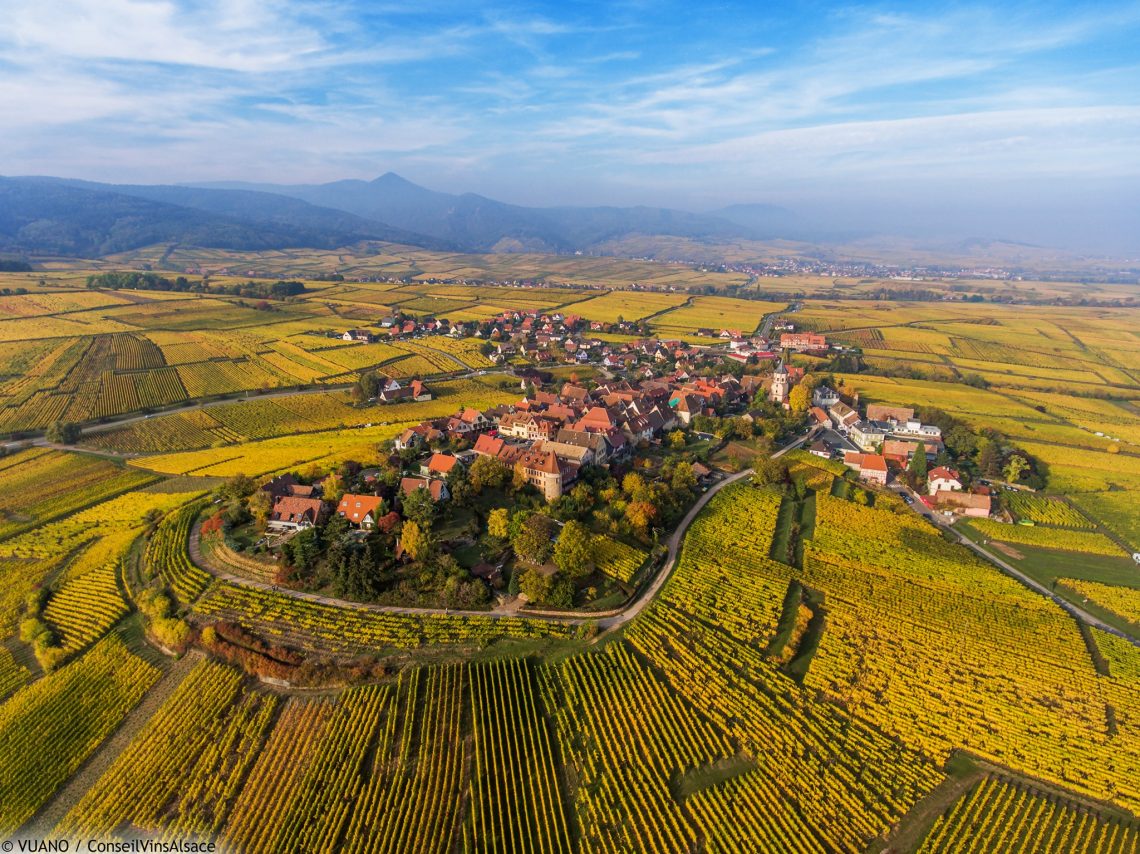The Wolf Post offers a professional service with free access, without subscription.
For this reason, a donation would also be a sign of appreciation for our work.
The Alsace Wine Route, the oldest wine route in France, winds its way through almost 170 km of breathtaking landscapes. Enchanting castles, the typical houses of the half-timbered area, windows adorned with flowers make Alsace an open-air nativity scene.
Known for its delicate and refined wines, Alsace is a region with an important winemaking tradition. Gewurztraminer, Riesling, Pinot blanc, Muscat d’Alsace and Sylvaner are some of the best known grape varieties from which high quality wines are made. Specialties that can be discovered and tasted along the Alsace Wine Route with guided tours and tastings.
Let’s find out more from the words of Marie-Jo Simon and Margot Jonckheere, responsible for the Agence de développement touristique d’Alsace.
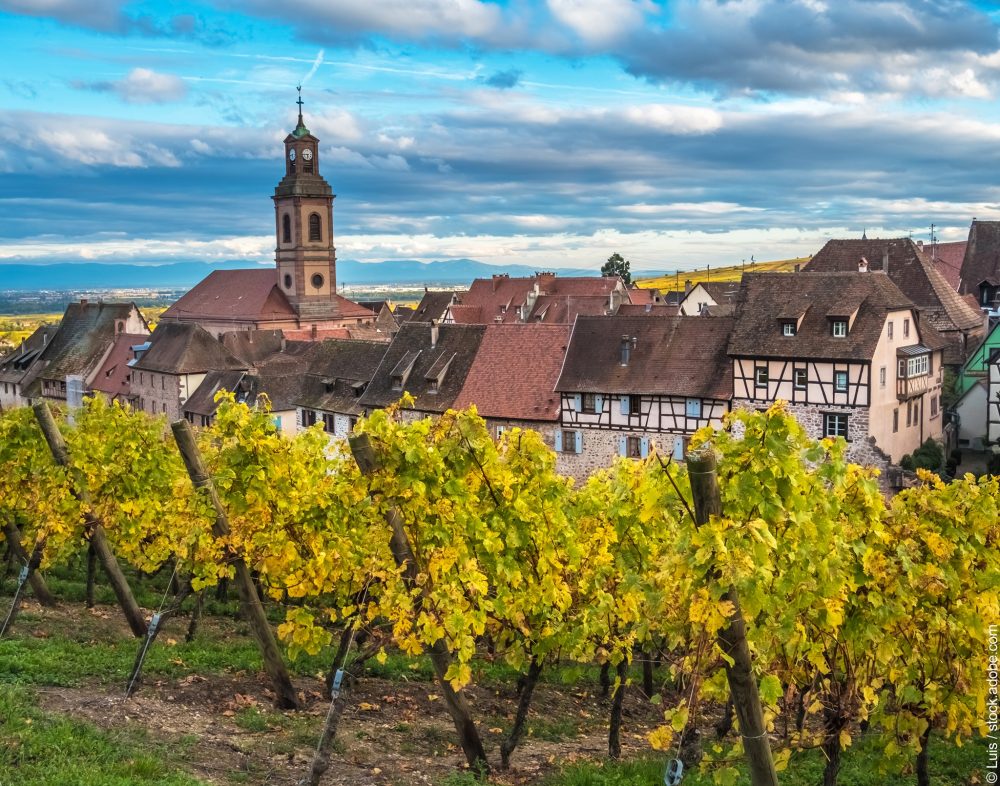
© Route des vins d’Alsace
Alsace Destination Tourisme (ADT) is the tourism development agency of the European Community of Alsace. ADT was born from the merger of the departmental committees of tourism of the Upper Rhine and the Lower Rhine (born in 1951). This entity, created on 1 July 2016, is the result of a common will of the departmental councils (now Collectivité Européenne d’Alsace), to give new impetus to tourism action, both in terms of regional development and project support. ADT implements the Tourism Innovation and Development Strategy for Alsace, and in particular coordinates the theme of excellence: “Savoring the stars and vintages of Alsace”, which integrates gastronomy, wine tourism and beer tourism.
ADT was behind the creation of the Alsace Wine Route in 1953, with elected officials and winemakers, delegations departing from the north and south, and meeting in Colmar, the capital of Alsatian wines! Inaugurated in 1953 and crossing 119 municipalities and more than 50 wine roads, the Wine Route offers breathtaking views over vineyards, medieval castles, flower-filled villages, half-timbered houses, etc. Visitors can stop in the winstubs, practice sports with family, couples or friends, but also participate in folkloric events. On foot, by bicycle, by train or even by car, there are many possibilities along the Wine Route, all to be (re) discovered.
The dynamics and enthusiasm of our destination where the winemaking tradition has quickly led to a rapprochement between the world of wine and tourism, after the creation of the Alsace Wine Route, Alsace has been embellished with vineyard trails , gatherings in the vineyard, wine schools, etc., but also activities such as the famous Picnic dal Vignaiolo, the Marathon du Vignoble, the slowUp of the Wine Route, evenings of poetry or music in the cellar, Christmas Cellars, etc.
Wine tourism is the essence of the identity of Alsace. The goal is to help people discover our identity by combining gastronomy, culture and food and wine, making a wine recognized as a cultural product. The development of the wine tourism sector therefore aims to increase tourism consumption: accommodation, catering, various purchases and other activities, to discover the final product, that is the wine, in view of its consumption and immediate or deferred purchase following the established contact. .
Today, the Alsace Wine Route is the third most visited vineyard in France, with nearly 7.7 million visitors. First route in France labeled Vignobles & Découvertes with nearly 400 actors involved in a quality approach (wineries, restaurants, accommodation, activity providers, tourist offices, events, visiting sites, accommodation agencies), the emblematic Alsatian route has become a essential stage of tourism in Alsace.
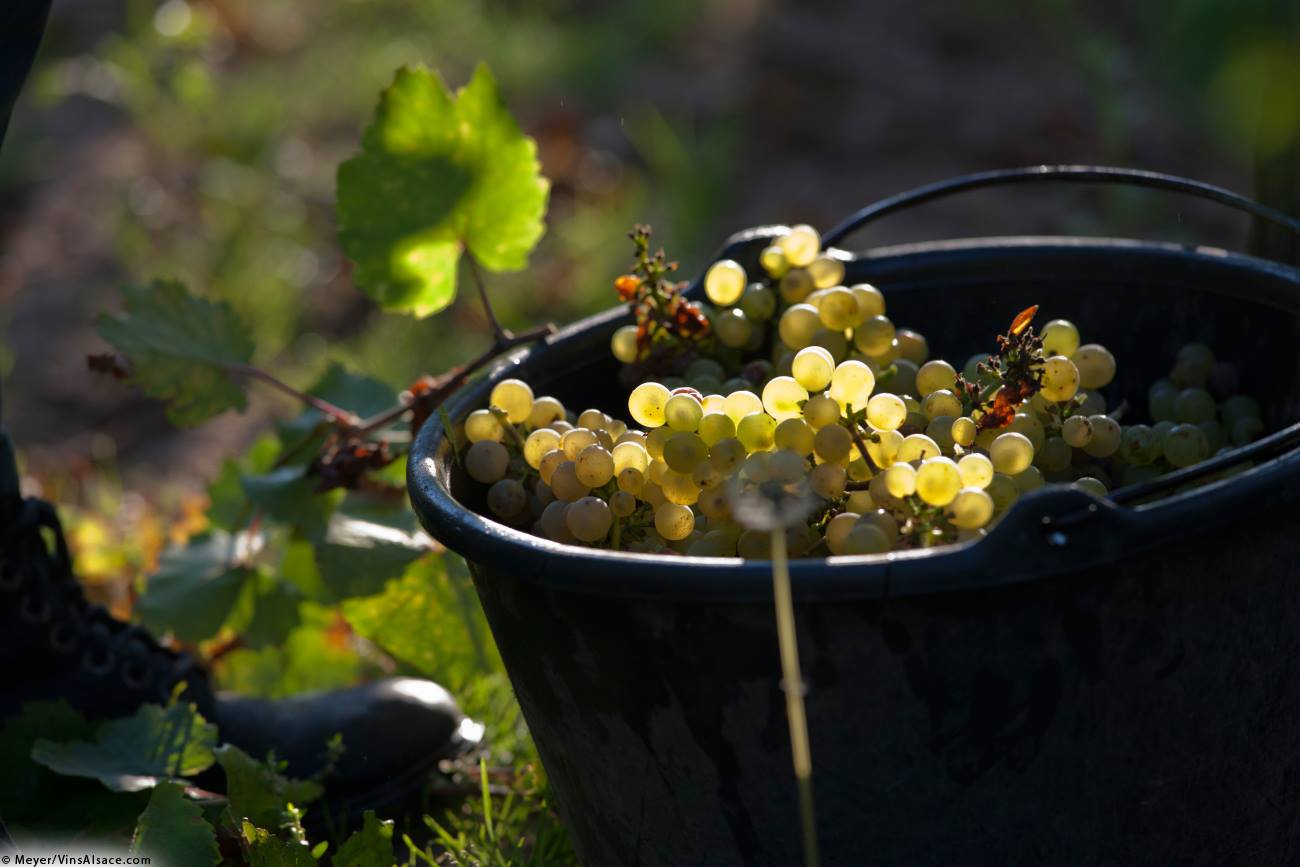
© Route des vins d’Alsace
Since 2013, and on the occasion of the 60th anniversary of the Wine Route, a real development strategy has been implemented around three development axes, based on a multi-year action program, the aim was to promote the Wine Route around experiential paths and innovative projects:
• RENEW THE DISCOVERY OF THE VINEYARD: Discovery routes in the Alsatian vineyard, Tourist harvest, Geocaching on the Wine Route, Véloroute du Vignoble;
• STRUCTURE THE OFFER AND PROMOTE PROFESSIONALS: Seminar, Wine tourism network, Assises de l’Oenotourisme;
• ANIMATE THE WINE ROAD: Gourmand Aperitif, Scripted Tastings, slowUp, etc.
The goals of creating an offer around the Wine Route have been achieved and today the structuring around quality approaches continues. Alsace still pursues the desire to renew its offer and remain a leading destination in France, promoting the attractiveness of the Destination and the increase in attendance, a source of economic benefits for the actors and partners involved.
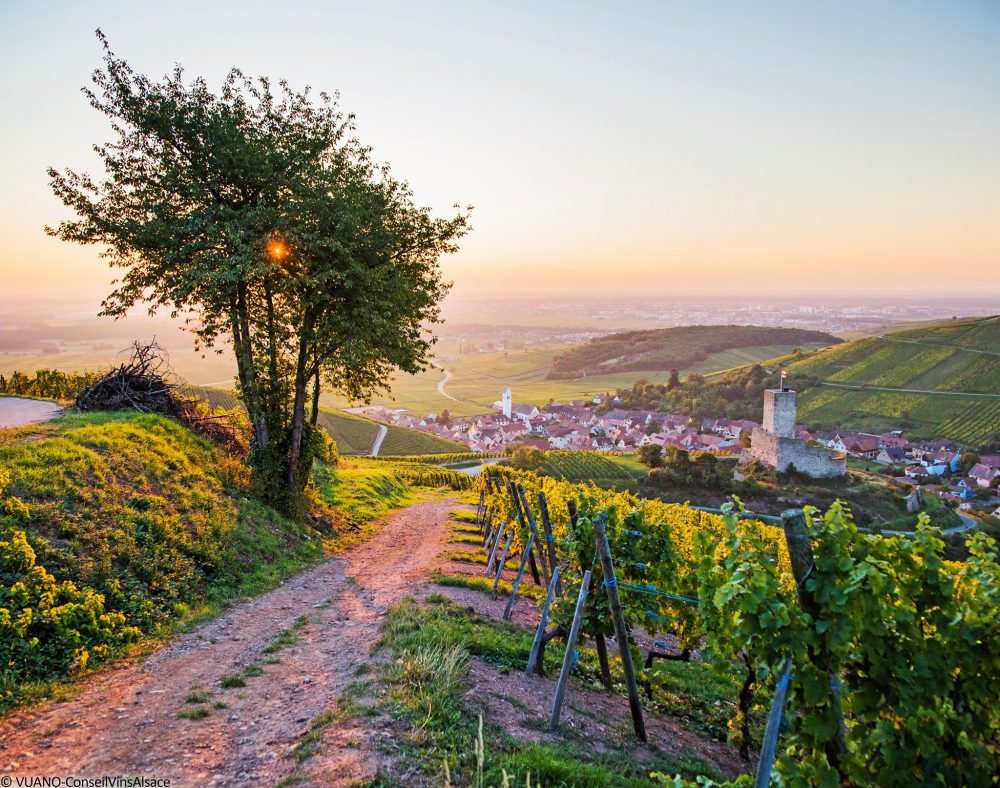
© Route des vins d’Alsace
Through which services/activities do you encourage the dissemination of the Alsace wine route?
To ensure the promotion of the Alsace Wine Route, various tools have been put in place, in particular the website and the associated Facebook page.
We are carrying out various actions and operations to promote the Alsace Wine Route to the general public. For example, an event has just taken place from 14 to 17 October: it is the “Fascinating Vineyards & Discovery Weekend”. This year it was held for the second edition in Alsace and took place simultaneously in 5 other important French wine regions. A real showcase for wine tourism, the event promotes activities and suppliers labeled Vignobles & Découvertes, thus guaranteeing visitors quality experiences in the heart of the vineyard. The goal of the “Fascinating Weekend” is to help people discover or rediscover the Alsatian vineyard through a multitude of unusual sports, cultural, gastronomic activities … to do with family or friends. Almost a hundred events were therefore offered in the 3rd weekend of October on the Alsace Wine Route and the event will be repeated next year from 13 to 16 October 2022.
We have also organized actions to support the sector when it comes out of confinement, as well as welcoming influencers and more ad hoc communication operations, especially on social networks, during the highlights in the vineyard.
The anniversaries of the Wine Route are also an opportunity for us to promote wine tourism, since in 2013 slowUp was created on the occasion of its 60th anniversary. It is an event that brings together more than 44,000 participants in one day and offers a route of almost 40 km without a car, to discover the wine route and the cycle path of the vineyards on foot, by bicycle, on skates.
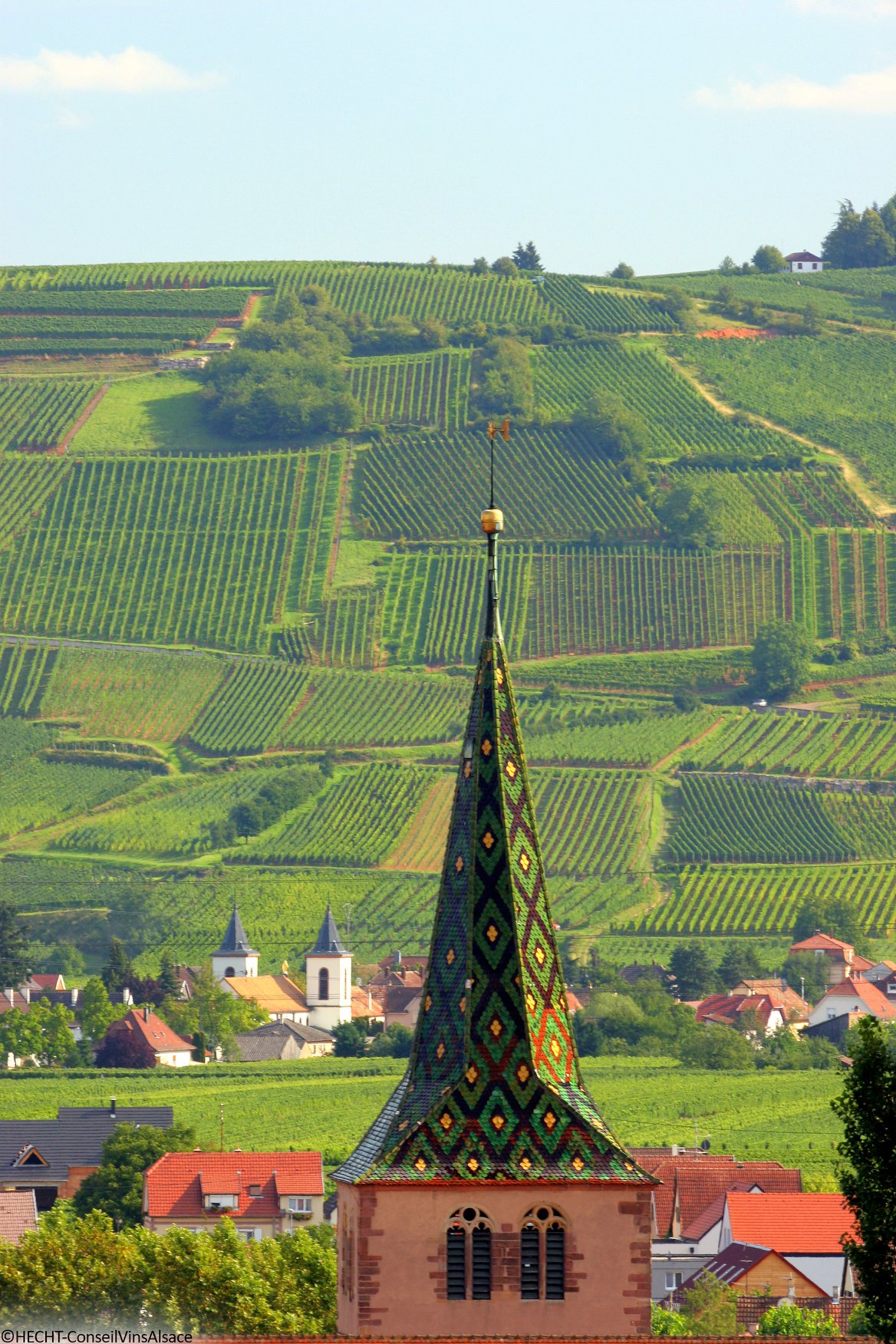
© Route des vins d’Alsace
The safe route passes through 11 towns at the foot of the Haut-Koenigsbourg castle around a program of various activities (entertainment, tastings, catering and musical atmospheres) on the 12 party places managed by local associations and 3 host villages, showcase of the wine of Alsace tourism and cycle tourism.
SlowUp presents shared values:
Live it together: meet others and live a common experience,
Sustainable development: living Alsace while preserving the environment,
Discovery: activities, tastings, meetings during the course,
Friendliness: Share a festive and fun moment in a good mood.
Today, together with partners from the world of wine and tourism, we are preparing the 70th anniversary of the Alsace Wine Route, which we will celebrate in 2023.
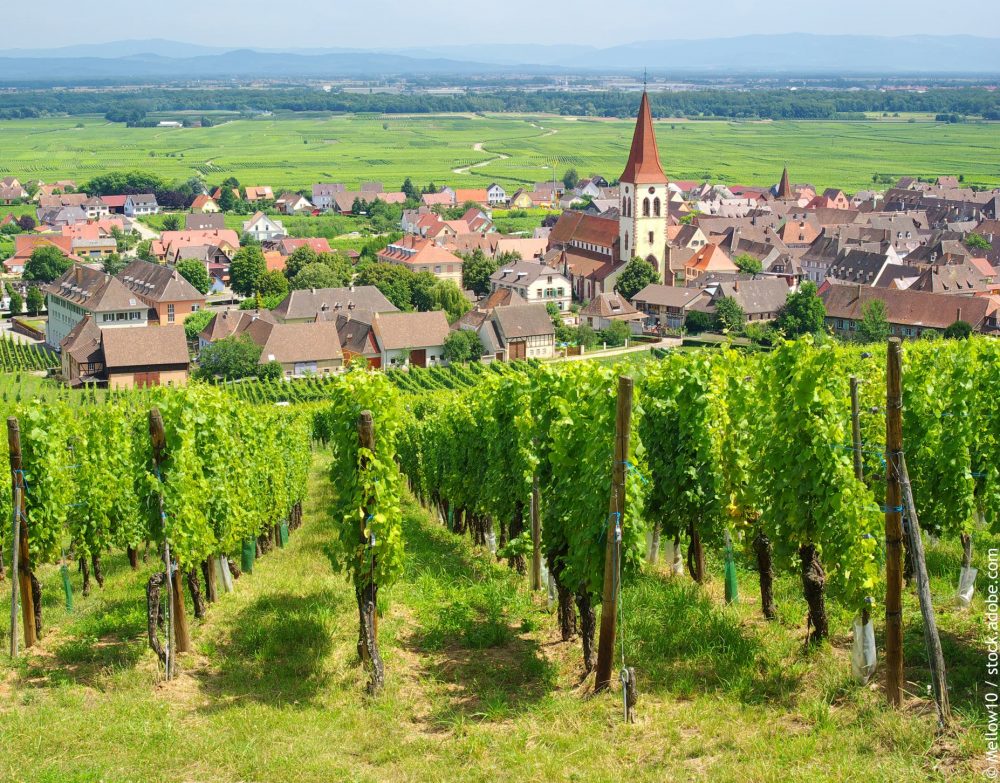
© Route des vins d’Alsace
Can you briefly describe the route and the territories of cultural and wine tourism interest through it?
The Wine Route is a lively meeting point from north to south of Alsace and covers more than 100 wine villages and nearly 800 wineries open to the public. Throughout the year the villages come alive to host wine or grape harvest festivals, food markets, Christmas markets or major events such as SlowUp on the 1st Sunday of June, or the Fascinating Weekend on the 3rd weekend of October.
Along some wine routes, other approaches are proposed, in an unusual way with guaranteed emotion: balloon flight, Qi Gong sessions in the vineyard, wine-fun evenings or eno-cultural escape games in the heart of nature, etc.
119 municipalities, reputed to be the most beautiful villages in Alsace with among others Marlenheim, Molsheim, Obernai, Barr, Ribeauvillé, Riquewihr, Thann and Guebwiller (without forgetting the Cleebourg vineyard) or even the favorite villages of the French, Eguisheim and Kaysersberg, Colmar it remains the capital of Alsatian wines.
This emblematic itinerary offers breathtaking views over vineyards, medieval castles, flower-filled villages, half-timbered houses, etc. Visitors can stop in the winstubs, practice sporting activities with their family, as a couple or with friends, but also attend folkloric events. On foot, by bicycle, by train or even by car, there are many possibilities on the Wine Route.
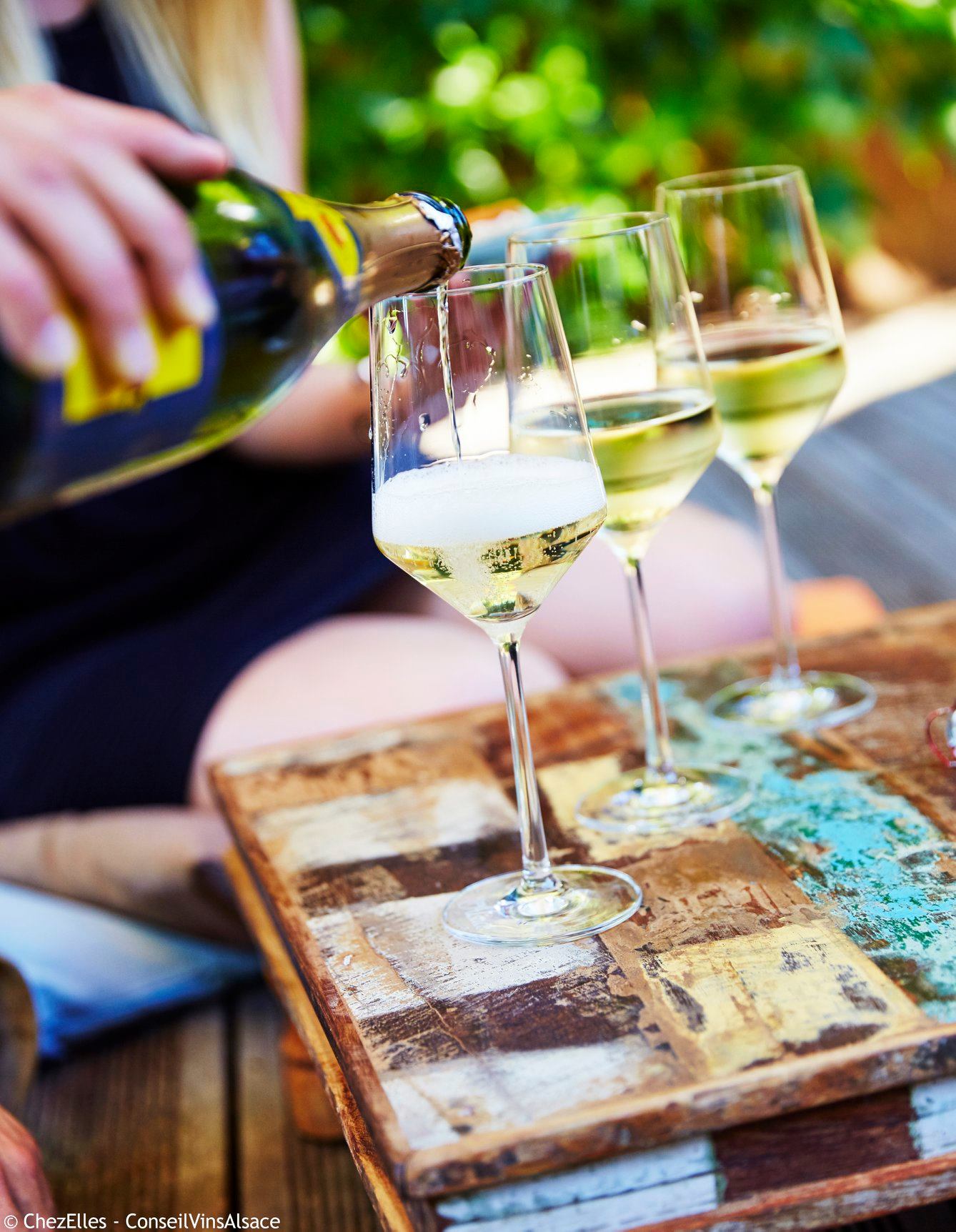
© Route des vins d’Alsace
What are the particularities of the terroir and its wines?
Sheltered from ocean influences by the Vosges mountains, which provide it with one of the lowest rainfall in France, the Alsace vineyard enjoys a sunny, warm and dry semi-continental climate. Located on the sub Vosges hills, between 200 and 400 meters above sea level, it enjoys the maximum solar radiation thanks to the particularly high height of the vineyards. These specific advantages of the Alsatian vineyard favor a slow and prolonged ripening of the grapes and the emergence of aromas of great finesse.
The Alsatian geology presents a real mosaic, from granite to limestone, passing through clay, schist, sandstone; this great variety of terroir, which covers an area of about 15,000 hectares, favors the development of many vines, the main 7 of which are:
• Sylvaner of Alsace: fresh and light, on the nose it evokes fruity or floral notes of citrus, white flowers or freshly cut grass. It is suggested with seafood, fish or cured meats.
• Pinot Bianco d’Alsace: it is fairly fruity with aromas of fruit from the orchard and floral nuances. Soft and delicate, it combines freshness and softness, which allow it to accompany most dishes: various buffets, seafood.
• Riesling d’Alsace: dry, stringy, delicately fruity, it offers a bouquet of great finesse with citrus nuances, but also floral or mineral notes. This gastronomic wine par excellence is unmatched with fish, shellfish, white meats, goat cheeses and of course sauerkraut.
• Muscat of Alsace: emanates a scent of fresh grapes, sometimes with subtle floral scents. Unlike southern muscatel, it is dry and gives the delicious sensation of biting into a nice bunch. It skilfully embellishes aperitifs but also asparagus.
• Pinot Grigio d’Alsace: full-bodied and pulpy, develops smoky notes as well as variegated aromas of undergrowth, dried fruit, fresh bread. Dry, it is perfect with white meats and terrines. Richer, it is excellent with foie gras, Comtés and Asian cuisines. It gains in expression after a few years.
• Pinot Nero d’Alsace: develops aromas of red fruits such as cherry, raspberry, currant or even slightly woody aromas. Aged in barrels, it develops a more structured and complex structure. It goes well with red meats, game and cured meats.
• Gewurztraminer d’Alsace: offers a true aromatic palette! Full-bodied and generous, it develops complex aromas of exotic fruit, flowers or spices. Powerful and exuberant, it is often round. It is perfect as an aperitif, with exotic cuisines and all fragrant and spicy dishes, with full-bodied and sweet cheeses.
Since 1972, AOC Alsace wines must be bottled in their region of production, in a “Rhine flute” bottle.
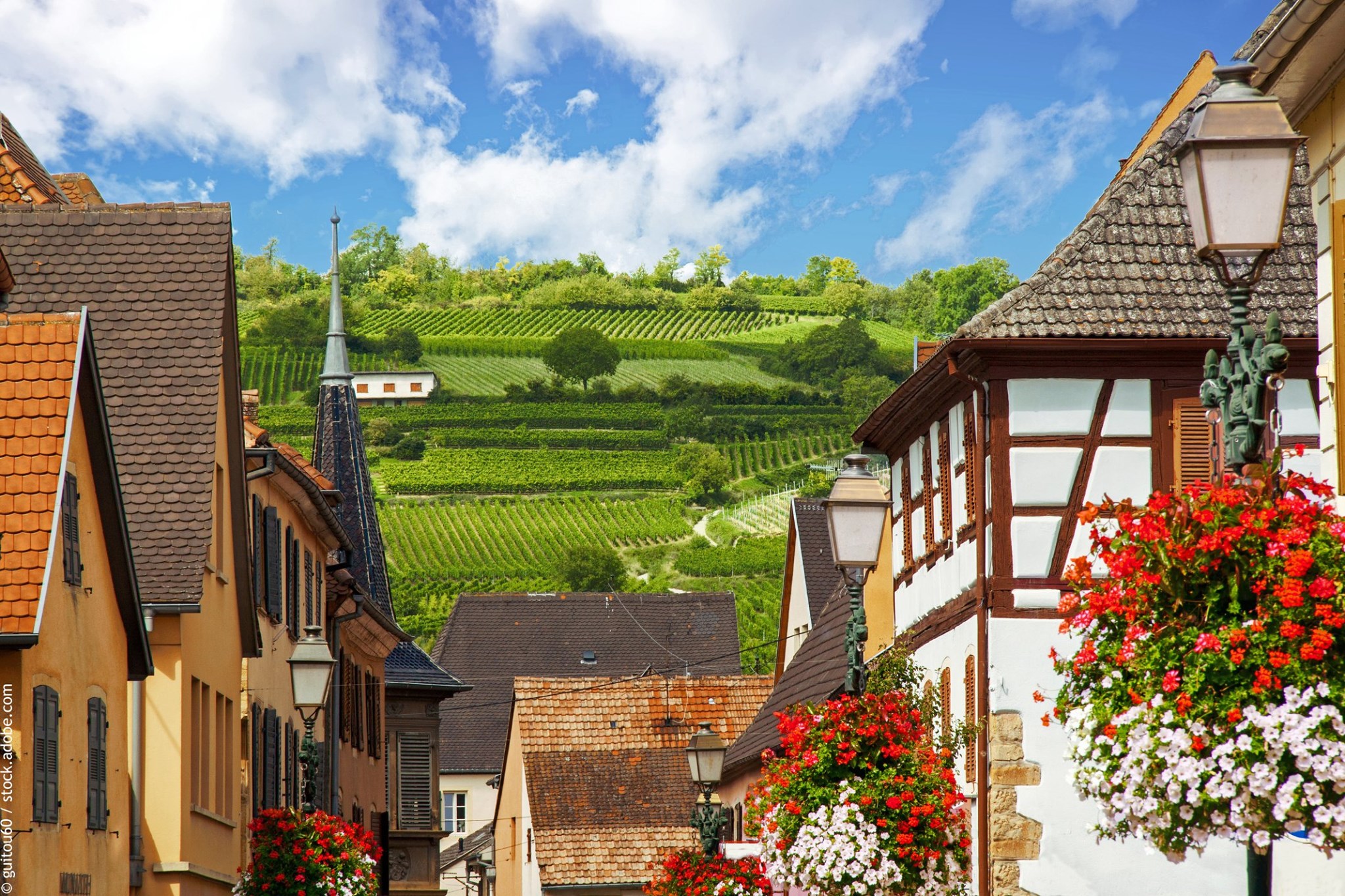
© Route des vins d’Alsace
Why choose the Alsace Wine Route?
Renowned wine region, Alsace offers many activities related to wine and vineyards throughout the year. The traditional tasting tour now gives way to original initiatives that offer a true experience of discovery in the Alsatian vineyard: scripted wine routes, balloon flights, geocaching meetings, Qi Gong sessions in the vineyard, cultural eno- Escape Games… Share precious moments in a friendly atmosphere in the heart of the vineyard by classic or electric bicycle, by Segway or just walking!
Throughout the year, the wine villages come to life in turn. The festive and traditional spirit of the vineyard is reflected in many ways with large-scale gourmet or sporting events with the slowUp, the vineyard marathon, the winegrower’s picnic, the gourmet aperitif and the Fascinant Vignobles Week-End & Discoveries.
The first itinerary in France to receive the Vignobles & Découvertes label, the Alsace Wine Route guarantees visitors a unique and high-quality experience in the heart of the Alsatian vineyard. Visits to estates, tastings, wine tours, heritage treasures … no less than 400 actors are engaged in this quality approach.
An invitation to a sweet and gourmet journey: just enough to let yourself be transported into an enchanting setting where castles, typical villages and vineyards are revealed and animated by many events:
• Wine, Harvest or Grape Festivities.
Particularly important in Alsace are the Fêtes des Vendanges, wine festivals held annually in the wine villages of France. Parade, harvester’s meal, tasting of fine wines, folk dances … The recipe is complete to have fun!
• The Queen of wines:
Wine is important in Alsace, and it is only natural that the election of the Queen of Wines has been celebrated since 1954! These young ladies are not only pretty, but they also have a good knowledge of wine.
Ambassadors of wines, they have to promote Alsace wines, vineyards, winemaking professions and wine tourism in numerous events. They are especially revealed during the traditional Colmar Wine Fair, every August.
• The wine routes:
A wine route is a route that combines nature and enology, offers an attractive walk for tourists or an enriching discovery for the locals.
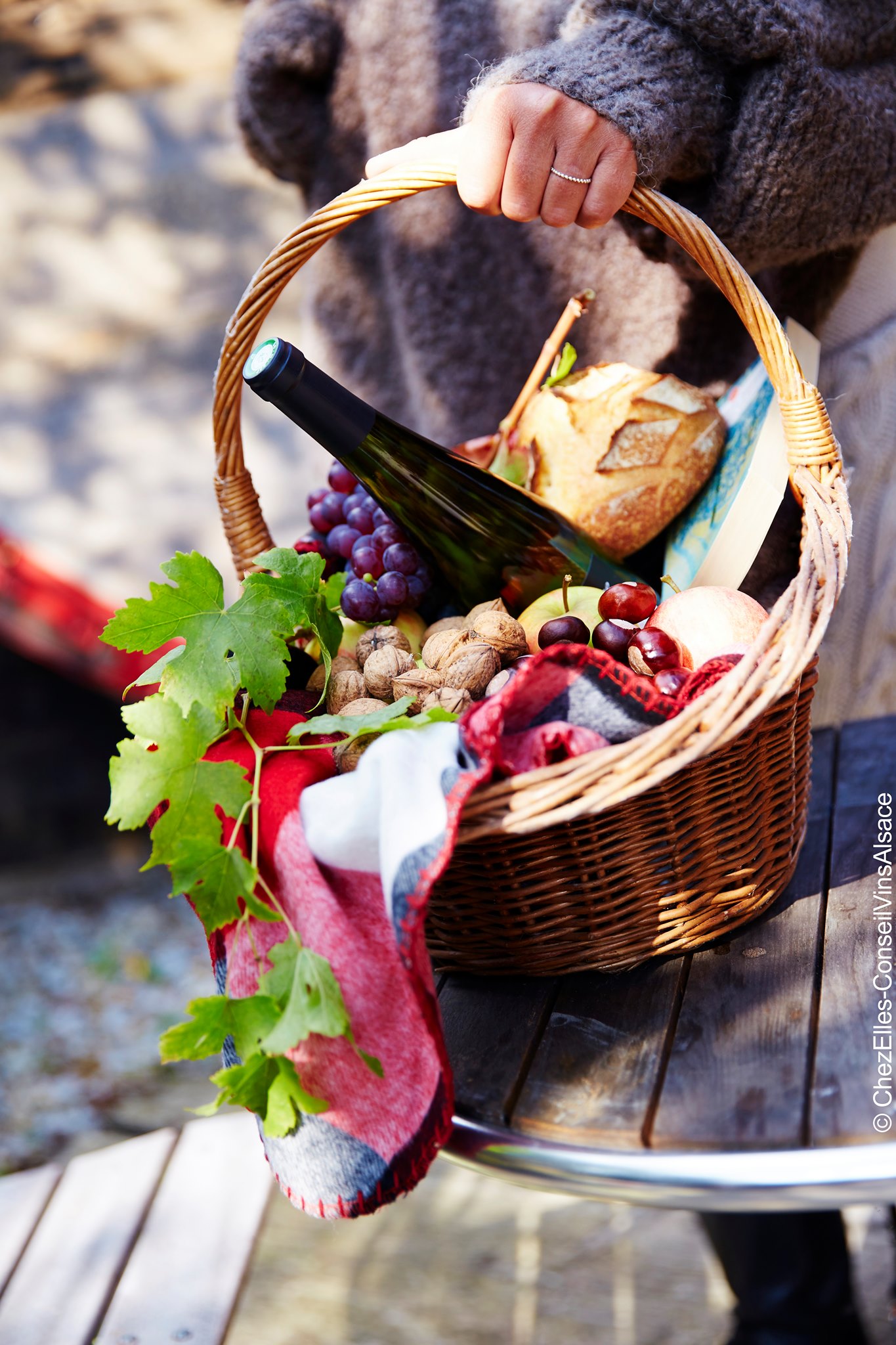
© Route des vins d’Alsace
• The Picnic of the Winemaker:
This original idea of the Independent Winegrowers of Alsace has made its way throughout France! Born in Alsace in 1995, the “Pique-nique Chez le Vigneron Indépendant®” has continued to increase in popularity, over the years the movement has extended the event nationwide. Today, more than 400 companies (almost 100 independent Alsatian winegrowers) invite their customers, their friends and all those who wish to have a convivial day to discover the profession of winemaker. Visitors bring their picnic, the winegrower offers wines and welcomes to talk about his profession and wines during the Pentecost weekend.
• Brotherhoods of Alsace wine:
There are more than 10 wine brotherhoods in Alsace, including the Confrérie St Etienne, the oldest in France. They have existed since the 12th century, their goal is simple: to promote Alsatian wine and gastronomy. Their rituals are inspired by medieval practices but which are not associated with any mystical or religious character. These are circles of sharing, learning and development in oenology. It is possible to be included in these brotherhoods. The members are people of all ages and come from all backgrounds. They have one thing in common, which is the passion for wine and the desire to be the spokesperson for the Alsatian vineyard.
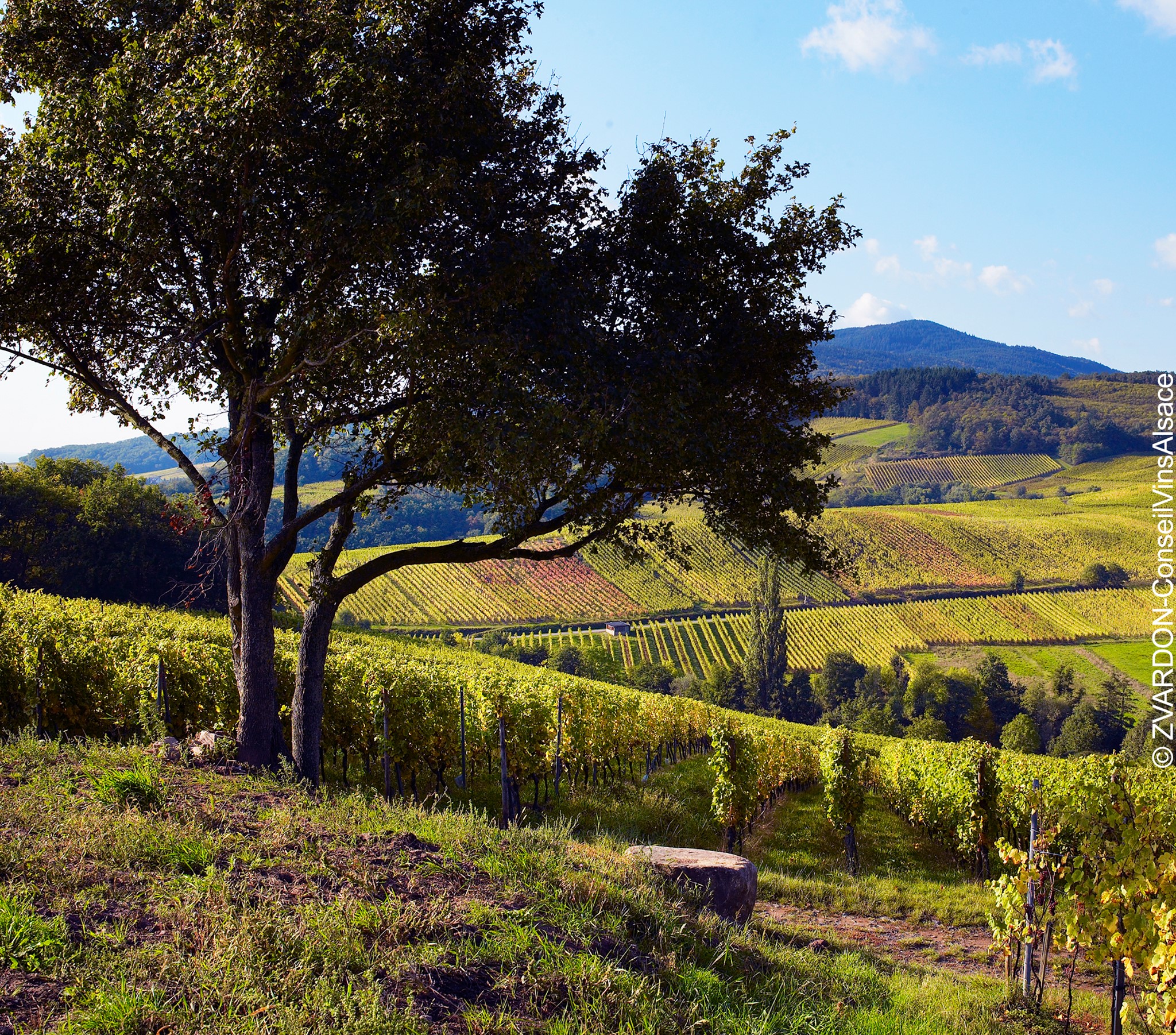
© Route des vins d’Alsace
Gastronomic markets:
Scherwiller, Obernai, Sigolsheim, Barr, Beblenheim, Wolxheim, Westhalten, Nothalten, Guebwiller, Dambach, Albé, Thann, Ottrott,… allow a gastronomic discovery of their heritage.
Organized from May to September, the food and wine walks represent a unique opportunity to meet the winemakers who present their wines and organize tours of their vineyards through tasting areas and gastronomic stops along a pleasant route.
• Sports activities:
Numerous foot races are organized throughout the year in the vineyard.
The Molsheim Vineyard Marathon, the Scherwiller Bike and Run, the Rouffach Grands Crus Circuit, the pearls of the Beblenheim vineyard, the Ortenbourg circuit in Scherwiller, the O’nze km from Obernai, the Race of Châteaux d’Ottrott … and more recently the Colmar Marathon. A beautiful sporting dynamic that knows how to appreciate the landscapes and wine-growing villages crossed by the runners, who are increasingly accompanied!
• Christmas cellars in Alsace!
Christmas in Alsace has become a must and an identity of the Destination, but it is also unusual and original thanks to the visit of a Christmas cellar. Alsatian winemakers invite you to step back in time to work in the cellar, which requires patience and vigilance, and the Christmas cellars present a mysterious world where the smells of grapes, wood, undergrowth, the lapping of fermentation. Ideal for sharing even more Christmas magic in Alsace!


